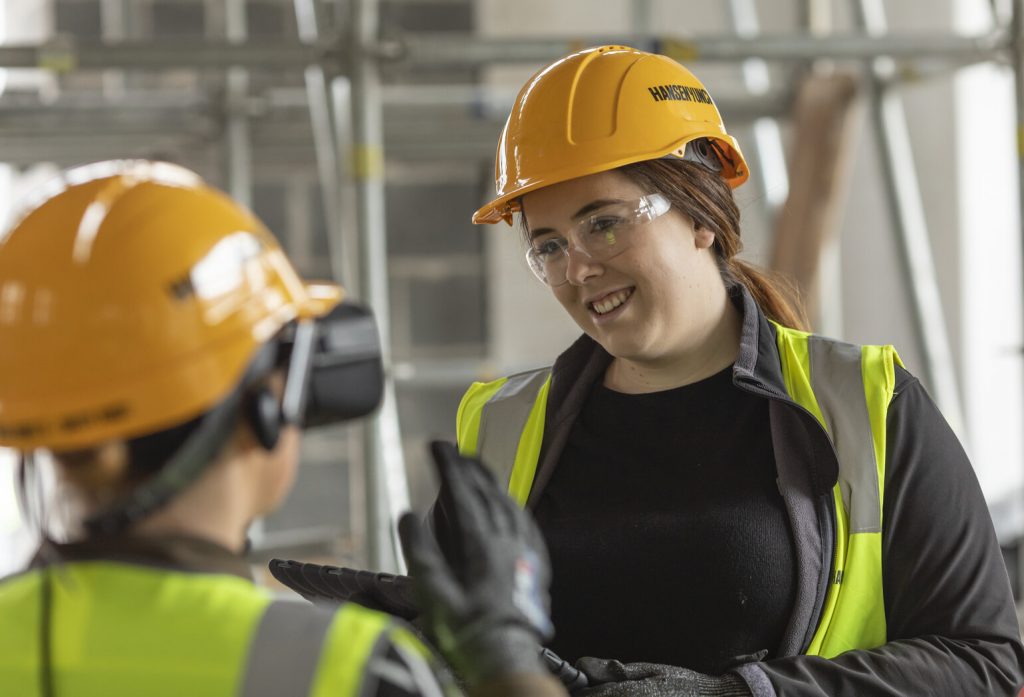Having dealt with some immense challenges over the past couple of years, the AEC industry is looking forward to a period of immense transformation and harnessing technology to deliver stronger outcomes.
Australia has risen from many challenges in the past year. From dealing with bushfires to the COVID19 pandemic, we have stood our ground and now are on a steadfast march towards recovery.
These events have made an impact not just on human lives, but also the economic fabric of the nation. Industries like Architecture, Engineering and Construction (AEC) were faced with unexpected challenges and business uncertainty. Mostly due to a broken global supply chain and the necessary health and safety protocols, like social distancing and remote working. While we can say that things are looking better, we must acknowledge the changes that we are (and will be) experiencing in the coming year.
The AEC players have pioneered digital transformation in Australia, thanks to their pursuit of establishing business continuity; keeping the impact of uncertainty at bay in the future. Besides technology, change in processes is also imminent. Some of the key trends that we can look out for in the AEC sector for 2021 are discussed below.
Technology and data-driven approach 2.0
The Australian construction and engineering market is not new to innovation or adoption of technologies that support growth and break down complexity. But the past year, the pandemic led to accelerated adoption of digital technologies. Remote work added to the existing challenges to collaboration.
Better Project management solutions that enabled teams to collaborate became an essential IT investment. In 2021, we can expect a surge in the number of digital solutions that are specifically built for the AEC industry.
And I’m talking beyond just design and manufacturing. For example, when we consider drones used in aerial site survey, safety inspection, or even mapping, we are actually achieving more than one results. Firstly, we are simplifying the job, getting more visibility on the overall worksite, and ensuring the safety of workers by reducing the number of on-field engineers.
Better safety protocols and quality
The pandemic is a global health crisis which can be controlled and overcome. Personal hygiene and safety are at top of the many ways we can ensure that we do not endanger our colleagues or our families. In AEC, much of the work gets done onsite, or in closed factory environments with many dedicated on-ground personnel.
Therefore, employers are going to be seeking better ways to ensure the safety of their workers. From controlling the worker density, to providing better equipment that expedite processes and make sure there is minimum disruption.
Focus on quality will become an important factor to future-proof the work done and allow for minimal interaction between workers, for their safety. Also, we can expect policies on reduced sharing of tools and push for personalised equipment. While safety is going to be a major pursuit, the overall enhancement of operational procedure will be an important step towards it.
Optimised project management and onsite operations
Centralised communication, where every team and individual involved in a project will receive the same information at any time will ensure that the project runs smoothly. Communication is the key to a successful project.
As mentioned earlier, we can expect digital tools that are specifically built for construction businesses, offering accurate visibility and always-available data to drive construction projects. Also, rest assured we can expect increased adoption of Design for Manufacturing and Assembly (DfMA) methodologies, with focus on lean manufacturing.
At present everybody is looking for the most economical way to do business. Hence, improving manufacturing plants and assembly lines will be important to many organisations. Prefabrication is another manufacturing model that we can expect to reach its peak in 2021.
This practice would also help reduce worker density onsite. Which can be further improved by making use of automation technology in both manufacturing and assembly.
Virtual Design and Construction (VDC), along with sustainability
In 2021, the AEC industry is looking forward to a transformation. Along with making better use of technology, the idea is to reduce costs, increase safety and quality, and achieve immunity from disruption.
Use of analytics in sourcing, operations, costing, and strategic management will be a key differentiator to traditional processes. Building Information Modelling (BIM) will be leveraged to its maximum potential for creating, coordinating, and completing new projects.
The intelligent data created by BIM supports the entire lifecycle of projects, including maintenance. Organisations will employ visualisation tools to ensure that the planning and designing phase provides the best model, after analysing all the factors that would influence the finished asset.
While many AEC companies extensively use BIM and CAD software such as the ones offered by Autodesk, we can expect them to utilise a more sustainable and environmentally-friendly approach. Smart cities and buildings are on the rise, but we can also expect increase in green buildings as well. Visualisation tools enable organisations to innovate for sustainability.
While 2020 was a year that was challenging, 2021 looks promising for the AEC sector. Safety takes a more important position this year owing to the pandemic. Technology would be the key driver of business growth, business continuity, and innovation. All that is left for us to see now is how strongly the AEC sector is going to end the year.
For more information on construction, architecture, engineering, or any of our other sectors, please visit autodesk.com.au.

